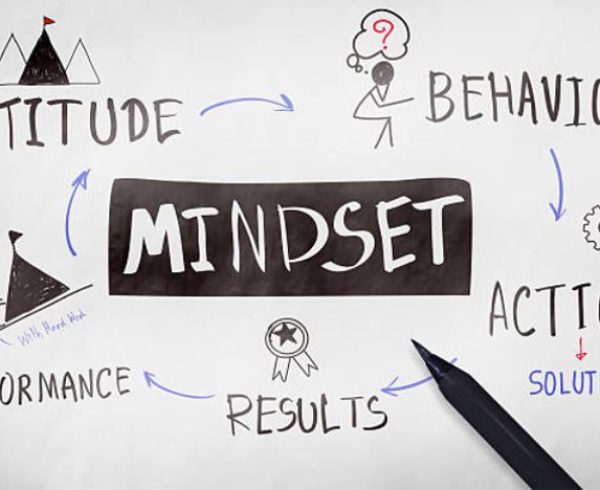Being mindful is a strength in the workplace. It is a mindset that involves being in the present moment, cultivating relationships, and focusing on one thing at a time. Mindful teams are more focused, stronger team players, and detail-oriented.
According to Harvard Business Review, mindful teams report a 28% reduction in stress levels and a 20% improvement in focus and concentration.
By working on becoming a more mindful leader, you will be able to cultivate a mindfulness culture in the workplace. Transition your workforce from stressful to mindful with these tips.
3 Tips To Become A Mindful Leader
Mindful leadership isn’t an intrinsic trait. It’s something that can be learned over time. By using the following tips, you’ll be on your way to becoming a mindful leader.
1. Be An Active Listener
First, be an active listener. Active listening is a method of wholeheartedly listening. When you actively listen, you focus on the message that the speaker is sending you, verbally and nonverbally.
By actively listening, you listen to understand, not to respond. When you’re present and focused on the speaker, you’ll comprehend the entire message. Being an active listener will strengthen your relationships with your colleagues, resolve conflicts more efficiently, and have a greater awareness of the topic at hand.
To improve your active listening skills, take a beat before you respond. Make sure that you fully understand what the other party said before responding. Paraphrase, ask a clarifying question, or encourage the initial speaker to provide more details.
2. Take Care Of Yourself
Another strong method to improve your mindfulness as a leader is to take care of yourself. You won’t be able to teach mindfulness to your staff unless you practice it and feel it yourself.
Take breaks, use breathing exercises, and self-care. By cultivating mindfulness within yourself, you’ll be able to model it to your peers and employees. When they see the benefits that mindfulness has given you, they will be more ready to work on mindfulness within themselves.
Modeling mindfulness for your staff will help increase employee buy-in when you are ready to implement a mindfulness culture for your team.
3. Growth Mindset
Thirdly, adopt a growth mindset. A growth mindset involves believing that you are capable of improving yourself. Those who adopt a growth mindset tend to feel more confident, motivated, and optimistic than those with a fixed mindset.
Individuals who go through life with a fixed mindset believe that the talents that they have are innate and cannot be improved. These individuals tend to feel easily discouraged, insecure, and not good enough.
Research has shown that those who use a growth mindset have better success in life. When it comes to mindfulness, a growth mindset will help you improve your mindfulness mindset.
Remember, don’t beat yourself up for making a mistake. Every mistake is an opportunity to learn. Take it one step at a time, and continue to improve your mindfulness.
How To Teach Your Team Mindfulness
Once you’re confident in your own mindfulness, you can teach mindfulness to your team. The following techniques can increase mindfulness in the workplace.
Distraction Free Meetings
One strong strategy to enhance mindfulness culture at work is to implement a distraction-free meeting policy. This policy involves cell phones off, emails closed, and focus on the speaker. Since being focused on the present is a hallmark of mindfulness, being fully present during staff meetings is a big step towards cultivating a culture of mindfulness.
This method is used by the project management software, Asana. Their distraction free meeting policy encourages employees to attend their meetings device-free. Employees and leadership have noticed that focus and engagement has increased since implementing this policy.
Mindfulness Opportunities
Another technique to increase mindfulness in the workplace is to offer mindfulness opportunities to your staff. This could be done in any way that fits your team’s needs. It could involve weekly meditations, yearly retreats, or community discussions.
Offering meditations, retreats, and community discussions surrounding mindfulness will help educate your staff on mindfulness, improve employee well-being, and strengthen workplace relationships.
The health insurance company, Aetna, offers mindfulness programs to their employees. These programs include yoga and meditation classes, which promote productivity and reduce stress.
These programs are part of their workplace wellness initiatives that lead to employee productivity and retention, better employee health and morale, and lower health-related costs.
Offer Mental Health Support
Additionally, offering mental health support is a powerful method to move your organization towards a culture of mindfulness. Offering mental health support in the workplace directly contributes to increasing mindfulness by fostering an environment that prioritizes well-being, reduces stress, and promotes self-awareness.
Companies that offer mental health support to their staff have less conflicts and better decision-making. Many companies have noticed the importance of mental health support in the workplace.
For example, Microsoft offers mental health support to its staff through counseling, therapy, mental wellness programs, and mental health days. They note that the focus on mental health has allowed their employees to thrive through improved work-life balance and prioritizing well-being.
Become A Mindful Leader To Increase Productivity And Profit
Overall, becoming a mindful leader is important to cultivate mindfulness in the workplace. When leadership is mindful, they’re able to model it for the staff. Mindfulness is important for workplace culture because it improves focus, productivity, and retention. Improved focus, productivity, and retention will lead to improved employee well-being and higher profits.
You can work towards becoming a mindful leader by working on actively listening, taking care of yourself, and adopting a growth mindset. Once you’re confident in your mindfulness mindset, you can teach your staff how to be mindful. Opt for distraction free meetings, offer mindfulness opportunities to your staff, and provide mental health support. Doing so will promote employee well-being, encourage your staff to be more supportive of one another, and meet company goals.
To continue learning how to cultivate mindfulness in the workplace, contact Mythos Group! We will work with you to develop the best mindfulness strategy for your team. Our goal is to help you become a mindful leader and guide your team to success.







